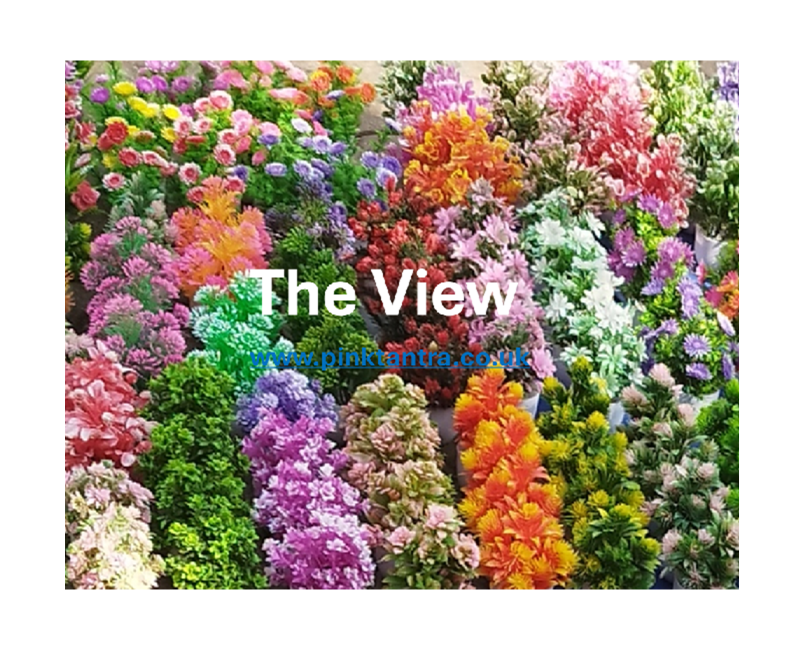The View
The View, as written by Abhinavagupta, expressed in Christopher Wallis’s book Tantra Illuminated, is something that came up in a conversation the other day. I realised that while my practices these days mostly conform to Kashmiri Shaivism, the View is something I don’t always keep in mind.
 I’ve often heard that in classical Tantra you study the View first, that is, that which points to that which has been realised by those who are awakened (Gana Yoga). You then practice (Kriya Yoga), and through practice, you learn to surrender (Bhakti Yoga). Although in Kashmiri Shaivism, I’ve been informed the starting point is action (Kriya) and gathering of knowledge (Gana), which strengthens our will (Iccha) to surrender (Bhakti), becoming “a Sambhava-aspirant, who truly deserves Saktipata”. This reflects the neo-Tantra approach, of practice first (Kriya). We then have some kind of mystical experience, which then draws us to study the mystics (Gana), where what they say and what they are pointing to, starts to resonate, leading to Iccha and Bhakti.
I’ve often heard that in classical Tantra you study the View first, that is, that which points to that which has been realised by those who are awakened (Gana Yoga). You then practice (Kriya Yoga), and through practice, you learn to surrender (Bhakti Yoga). Although in Kashmiri Shaivism, I’ve been informed the starting point is action (Kriya) and gathering of knowledge (Gana), which strengthens our will (Iccha) to surrender (Bhakti), becoming “a Sambhava-aspirant, who truly deserves Saktipata”. This reflects the neo-Tantra approach, of practice first (Kriya). We then have some kind of mystical experience, which then draws us to study the mystics (Gana), where what they say and what they are pointing to, starts to resonate, leading to Iccha and Bhakti.
In reality, at least for me, things have been more fluid and dynamic than either of these linear approaches make it sound. For me, it has involved a back and forth, to-and-fro, that has become a cumulative reinforcement. Indeed, I think this is what Wallis says, that we come to a place of discernment, where we question our life and come to realise that suffering is not all there is. We then experience some kind of initiatory moment, a trigger, an experience that makes us question the totality of who we are. And then, through successive experiences we come to recognise the Self; our Oneness.
Wallis quotes Abhinavagupta, from his Essence of the Tantras, as saying “This Self is an embodiment of the Light of Consciousness, it is Siva, free and autonomous. As an independent play of intense joy, the Divine conceals its own true nature (by manifesting plurality), and may also choose to reveal its fulness once again at any time.”
What needs to be pointed out thought is that while words, such as Siva and Divine, have religious connotations, Tantra is not a religion. And while it uses the anthropomorphic representations of gods and goddesses, such as Siva / Sakti, it does not propose one divine personality overlording us all (as in dualistic thought). In non-dual thinking there is only one consciousness manifested as innumerable things.
The View, then, is that there is only one consciousness that we are and partake of, and that we come to recognise this through wakening up from our socially constructed self, from all conceptual thought, from the experience of separateness into a non-dual consciousness. We don’t come to believe this, for belief is a construct of the mind. We come to have faith, gained through cumulative direct experiences.
Indeed, this awakening as a gradual process, is very different to the electrifying, sudden and dramatic experiences we generally hear about in Western versions of kundalini awakening, where we then need to go through years of cleansing afterwards to integrate the experience. From an Eastern, Kashmiri Shaiva, perspective, so my teacher/Gurutva in India says, this merely illustrates that the Guru has not done his job properly. Through transmission the Guru helps clear our blockages as an integral part of the gradual cleansing and awakening process, making the whole experience more subtle and gentle.
The implications of this for our ‘practice’ is (as everything is divine and so every experience is divine if we are conscious of it) that washing the dishes is as divine as having sex. We only differentiate due to the fact that through the senses and in the mind, sex is ‘often’ perceived as being more pleasurable. But in full awakening there can be no difference as pleasure and pain loose their conceptual meaning. Our practice then is no longer 20 minutes of meditation in the morning and evening, or 50 minutes on the yoga mat. Our practice becomes our life, one continuous state of consciousness.
Brining it all together
Non-dual Shaiva Tantra, as Wallis says, holds that one things alone exists (consciousness, divine), but in various permutations. This means the transcendent and the immanent; pure consciousness and us (what we perceive through the senses and the mind) are one and the same. However, we don’t often experience them as such, but rather one dominates at any given time. The spiritual journey is, through keeping the View in mind, to bring them into an harmonious balance; the ground of our being, and our dynamic embodiment.
Connect on Instagram / Facebook / Twitter
See my Yoga and Tantra related Videos on Vimeo
Message me direct if you are interested in yoga, therapeutic yoga, kundalini tantra yoga, tantra practices, trauma-informed coaching, spiritual coach, gay coach, mindfulness and behavioural coaching, Reiki or stress management robert.pinktantra@gmail.com
See my personal development / personality profiling book DISCover the Power of You published through John Hunt Publishing Ltd, 2017. ISBN: 978-1-78535-591-2
And for those who enjoy historical fiction, stories of underrepresented life’s, see my first novel Fermented Spirits published through Austin Macauley Publishers, 2022. ISBN-13: 978-1398437159